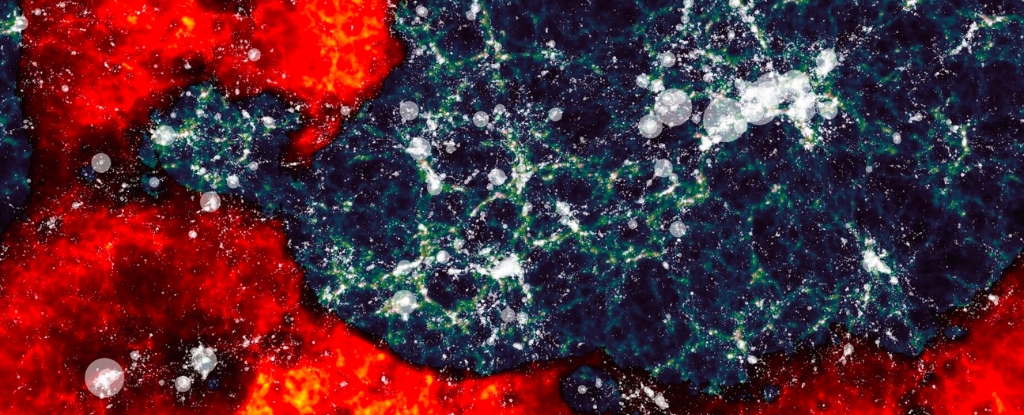The universe was just different when it was younger. Recently, astronomers have discovered that complex physics in the young cosmos may have led to the evolution of supermassive stars, each weighing up to 100,000 times the mass of the Sun.
We currently have no observations of the formation of the first stars in the universe, which probably took place when our cosmos first came into being a few hundred million years old.
To understand this important epoch, astronomers use sophisticated computer simulations to test models of the formation of the first stars.
Over the years, astronomers have wrestled with the key question of what is the typical size of the first stars. Some early estimates predicted that the first stars could be hundreds of times more massive than the Sun, while later simulations suggested they would be of a more normal size.
Recently, a team of researchers put together a new simulation round and come to a very surprising result. Their simulations specifically addressed a phenomenon known as cold accretion. To build big stars, you have to pull a lot of material into one very small volume very fast.
And you must do this without raising the material’s temperature, since warmer material will prevent it from collapsing. So you need a method to extract heat from the material as it breaks down very quickly.
frameborder=”0″ allow=”accelerometer; autoplay; write clipboard; encrypted media; gyroscope; picture in picture; web-share” allowfullscreen>
Previous simulations had found the appearance of dense pockets within early galaxies that were rapidly cooling due to the emission of radiation, but did not have the resolution needed to follow their evolution.
The new research goes a step further by examining how the cold, dense pockets that initially form in the early Universe behave.
These simulations showed that large streams of cold, dense matter can encounter an accretion disk at the center of giant clumps of matter. When that happens, a shock wave forms. This shock wave rapidly destabilizes the gas, triggering the immediate collapse of large pockets of matter.
These large pockets can be tens of thousands of times more massive than the Sun, and in some cases as much as 100,000 times more massive than the Sun. With nothing stopping their collapse, they immediately form gigantic stars known as supermassive stars.
Astronomers do not yet know whether supermassive stars formed in the early universe. They hope future observations with the James Webb Space Telescope will provide clues to the formation of the first stars and galaxies and whether these monsters appeared in the early universe.
This article was originally published by universe today. read this original article.





